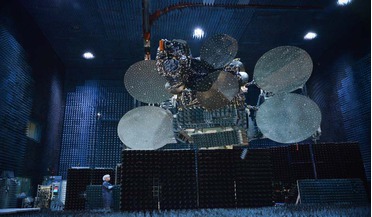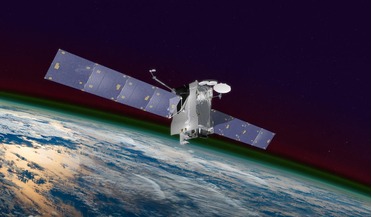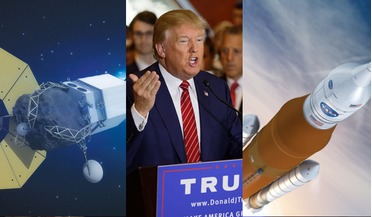 10 June 2016
Intelsat 31 Telecommunications Satellite Successfully Placed in Orbit
10 June 2016
Intelsat 31 Telecommunications Satellite Successfully Placed in Orbit
... from its initial launch date due to an issue associated with electrical ground system equipment at Launch Pad 24. The Proton booster that... satellite owners have began adopting electric propulsion, fleets of all-electric satellites, which can weigh 50...
 May 2022
The Space Industry in 2022
May 2022
The Space Industry in 2022
... of Europe, enabling space sustainability by providing the lowest SWaP (Size, Weight and Power) and most capable electric propulsion for spacecraft autonomy, collision avoidance and deorbiting once a satellite has reached its end of life. The...
 26 January 2018
NASA launches GOLD to study Earth-space boundary
26 January 2018
NASA launches GOLD to study Earth-space boundary
...emitted from the Sun. The particles and the electric and magnetic fields that guide their motion, coupled ... on course to reach its high perch in geostationary orbit using electric propulsion. The manoeuvre will take about four and a half months, after...
 February 2018
Growth drivers, requirements and threats in the smallsat industry
February 2018
Growth drivers, requirements and threats in the smallsat industry
..., there is a consistent need for replenishment, due to their relatively short five to eight year design life. Developments in electrical propulsion expected towards the late 2020’s may extend that lifespan but at the end of their useful life...
 November 2021
Space insurance and the future of risk management
November 2021
Space insurance and the future of risk management
... is interested in the type of solar array and battery employed and keen to know whether it uses bipropellant or electric propulsion. Secondly, the cost of insuring space risks generally constitutes a higher proportion of an insured’s budget, the rule...
 20 January 2017
Winners and potential losers of the Obama and Trump administrations
20 January 2017
Winners and potential losers of the Obama and Trump administrations
... U.S. commercial space market, including continued development of advanced space technology for life support and solar electric propulsion, collaboration with industry to develop deep space habitats, and initiating efforts to allow the private sector...